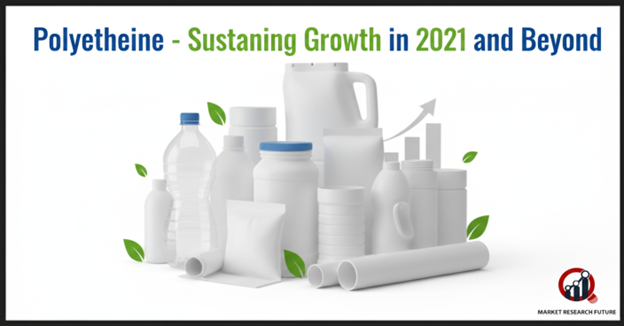Polyethylene - Sustaining Growth in 2021 and Beyond

Polyethylene market Overview
Polyethylene (PE) is the most widely used thermoplastic polymer in the world, consisting of long chains of hydrocarbons. Its versatility, cost-effectiveness, and durability have made it a cornerstone of the plastics industry, with applications spanning packaging, consumer goods, textiles, medical devices, and industrial components. Polyethylene’s adaptability and wide-ranging use cases ensure its continued relevance, even as the global market seeks sustainable and recyclable materials.
According to market estimates, global polyethylene production exceeds 100 billion kilograms annually, reflecting its central role in modern manufacturing and packaging solutions. The polymer’s growth is supported by industrial expansion, rising demand for lightweight and durable materials, and advancements in polymerization technology.
History of Polyethylene
Polyethylene was first discovered accidentally in 1933 by American chemist Edgar C. Bain and Russian-American chemist Isaac B. Colten. While working on unrelated experiments—Bain on hydrogen diffusion into nickel carbonyl and Colten on ethylene gas reactions—the researchers noticed the formation of a white, solid powder. This serendipitous discovery laid the foundation for one of the most ubiquitous plastics in modern life.
Physical and Chemical Properties
Polyethylene is known for its high polymerization, meaning it contains a large number of repeating units in its molecular chain. This contributes to its:
- Durability and stress resistance: Ideal for packaging and containers.
- Cost-effectiveness: Can be produced using lower-grade raw materials while maintaining quality.
- Versatility: Suitable for applications from flexible packaging to rigid medical equipment.
Its characteristic blue hue is common in industrial forms, though it appears colorless or translucent in many consumer applications.
Polyethylene vs. Polypropylene
While polyethylene is highly flexible and durable, polypropylene (PP)—another widely used polymer—offers a more rigid and crystalline structure.
- Polypropylene (PP) is synthesized from propylene via high-temperature, high-pressure catalytic processes, often yielding a polymer with higher molecular weight and rigidity.
- Applications: PP is prevalent in the automotive, electrical, and food processing sectors, as well as in manufacturing consumer containers, bags, and durable goods.
- PE vs. PP: Polyethylene offers better stress resistance and flexibility, whereas polypropylene delivers higher rigidity and low-friction properties. The two polymers can be combined to form polyethylene-propylene (PEP) blends, balancing strength, durability, and flexibility for specialized applications.
Key Applications of Polyethylene
Polyethylene’s versatility underpins its expansive industrial footprint:
- Packaging: Bottles, films, and containers for food and beverages.
- Textiles: Fleece jackets, synthetic fabrics, and non-woven materials.
- Medical Equipment: Tubing, disposable syringes, and medical packaging.
- Industrial Use: Pipes, sheets, and moulded components.
- Consumer Goods: Toys, household products, and daily-use plastics.
Its lightweight nature, durability, and ability to retain form make PE a preferred material across sectors.
Market Outlook
The polyethylene market continues to sustain growth due to:
- Rising global demand for packaging materials, especially in emerging economies.
- Advances in polymerization and recycling technologies, enhancing sustainability.
- Industrial expansion, particularly in consumer goods, automotive, and medical sectors.
- Integration with polypropylene and other polymers to create specialized blends.
Despite its success, the industry faces challenges, including environmental concerns regarding plastic waste and regulatory pressures for recycling and biodegradability. Addressing these factors is crucial for the long-term sustainability of PE production.
Conclusion
Polyethylene remains a cornerstone of modern industry, balancing cost-efficiency, versatility, and durability. Its continued evolution, driven by technological innovation and expanding applications, ensures that PE will remain a critical material for packaging, consumer goods, medical devices, and industrial components well into the coming decade.
As global demand for lightweight, high-performance, and recyclable plastics grows, polyethylene is poised to maintain its leading position in the polymer market, offering opportunities for innovation, sustainability, and industrial growth.

Leave a Comment